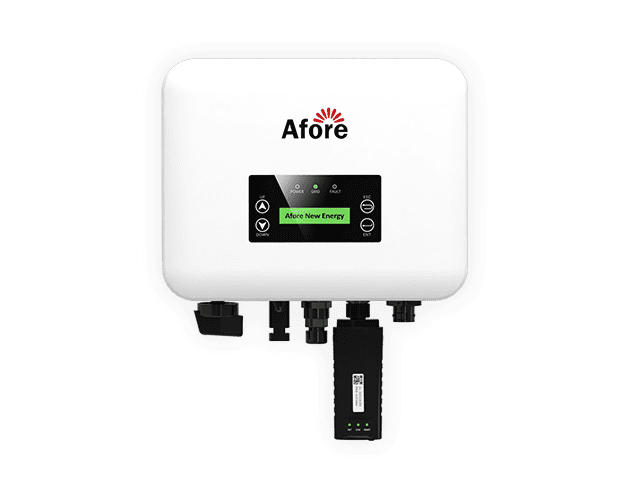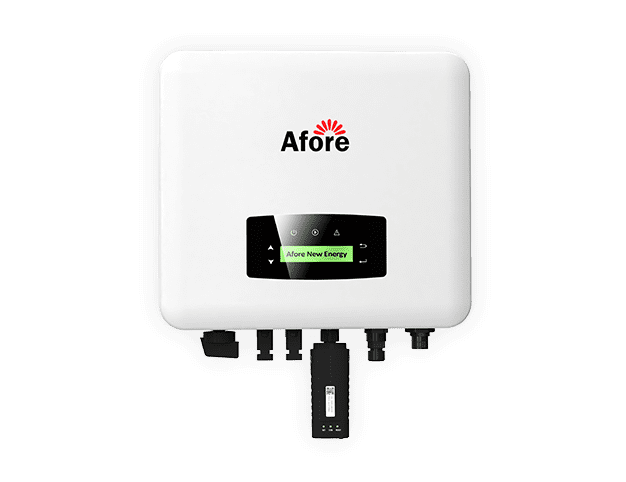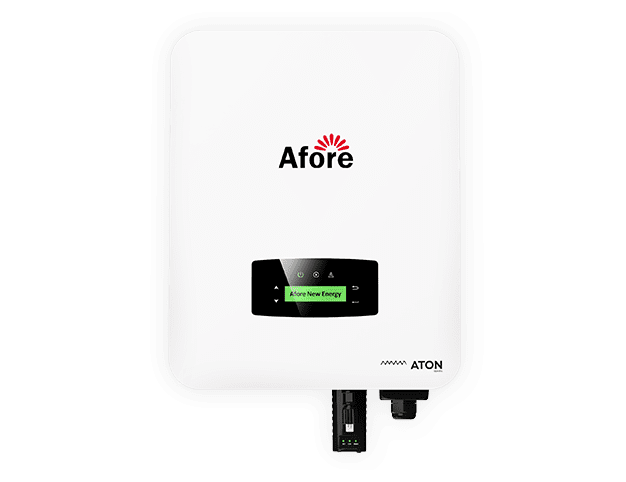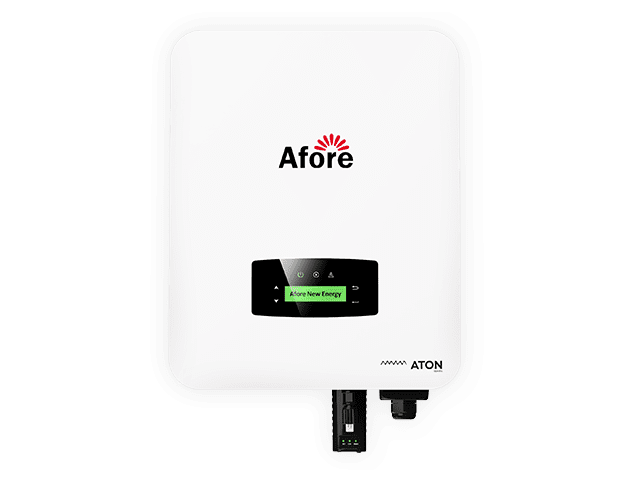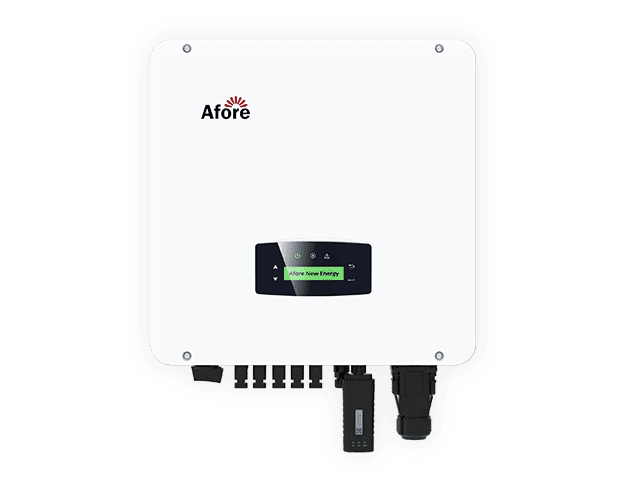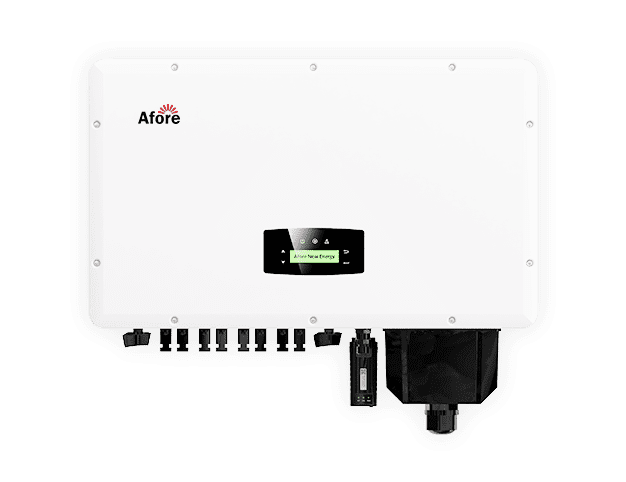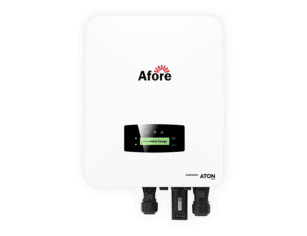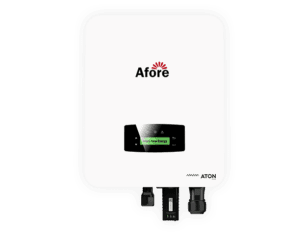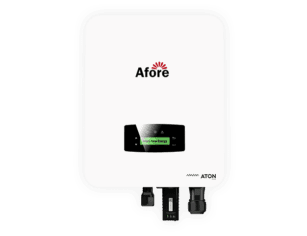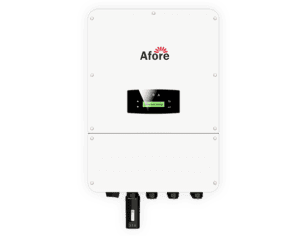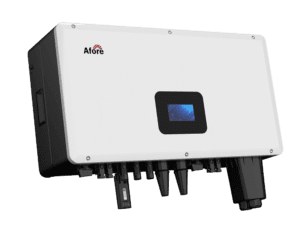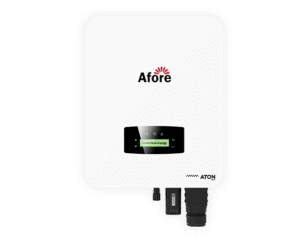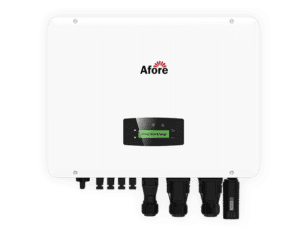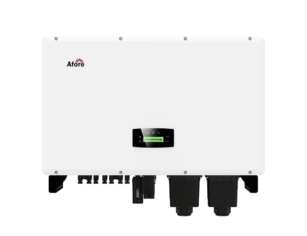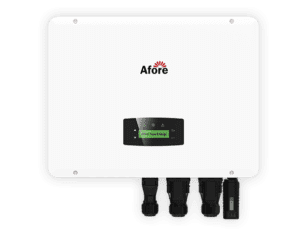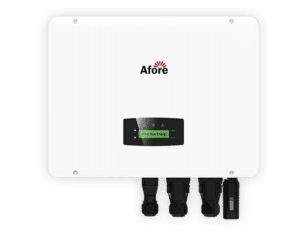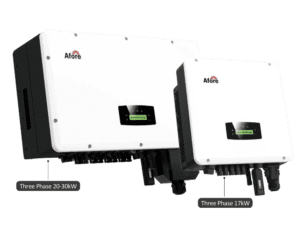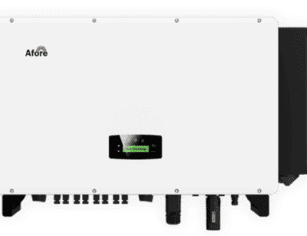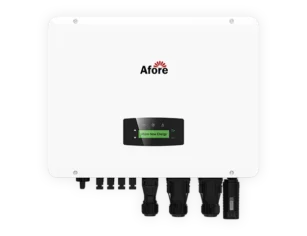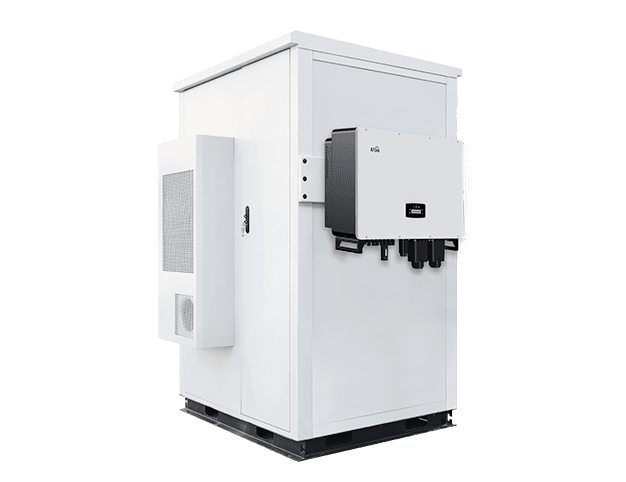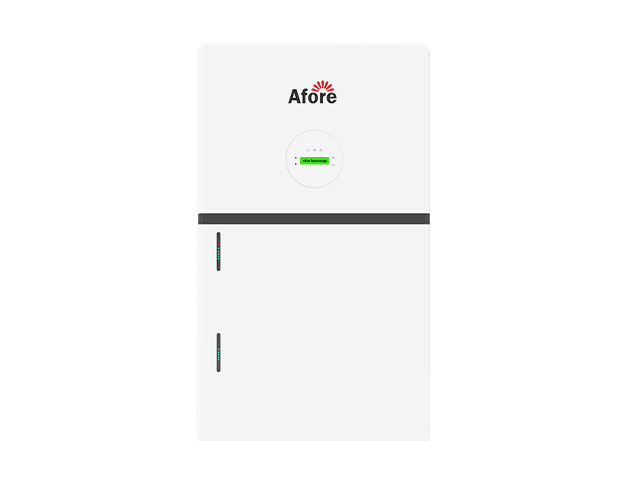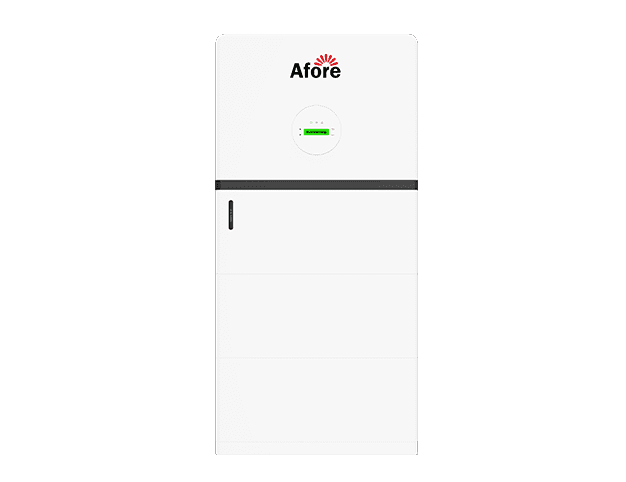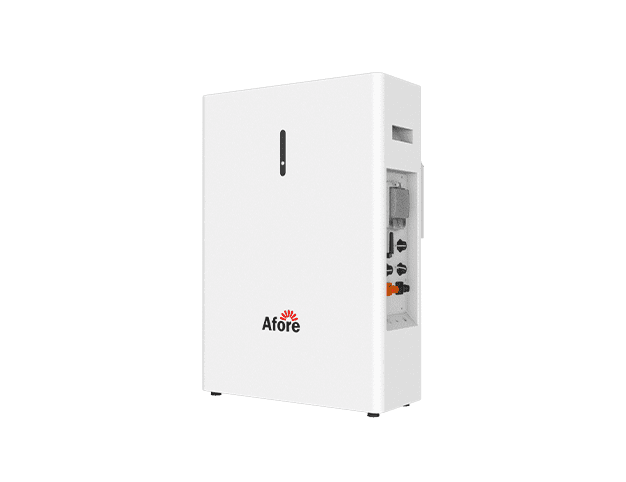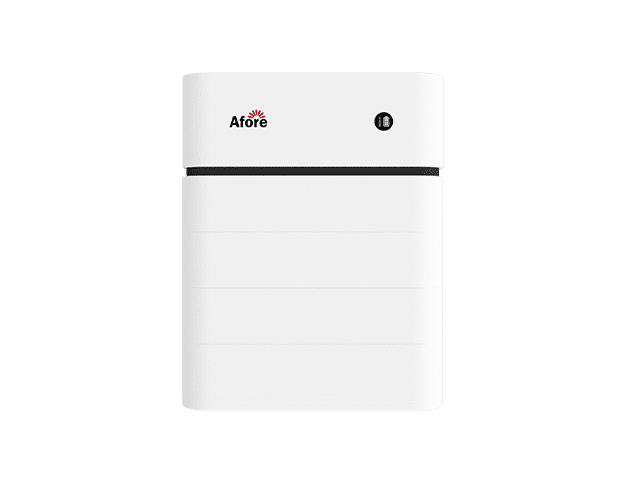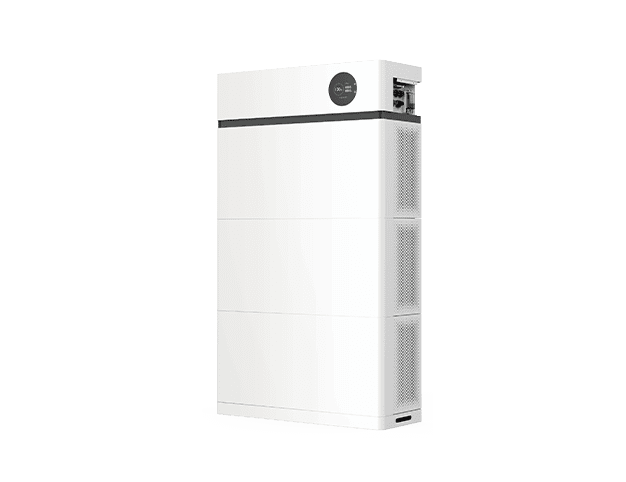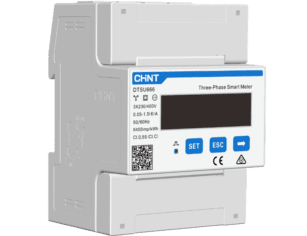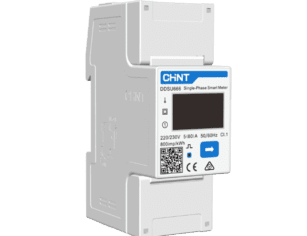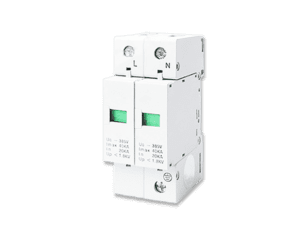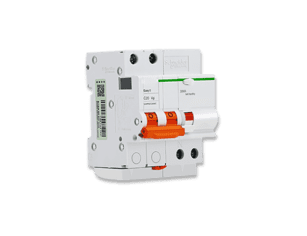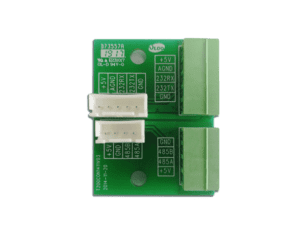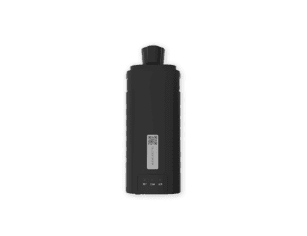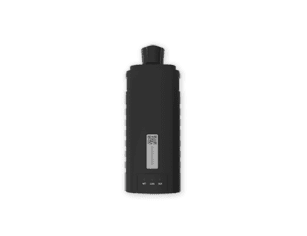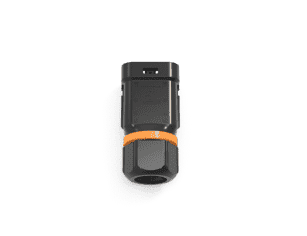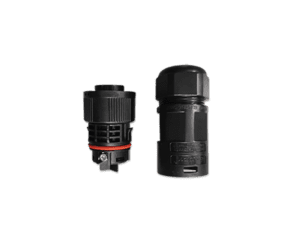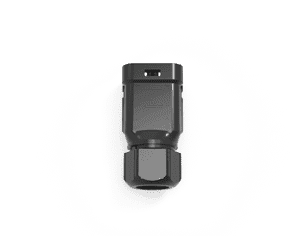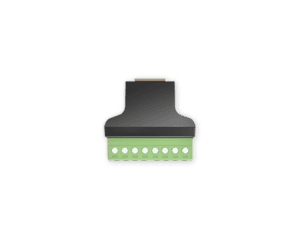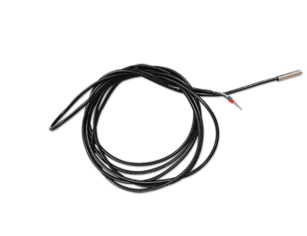Une charge électrique déséquilibrée : un danger caché pour votre système électrique
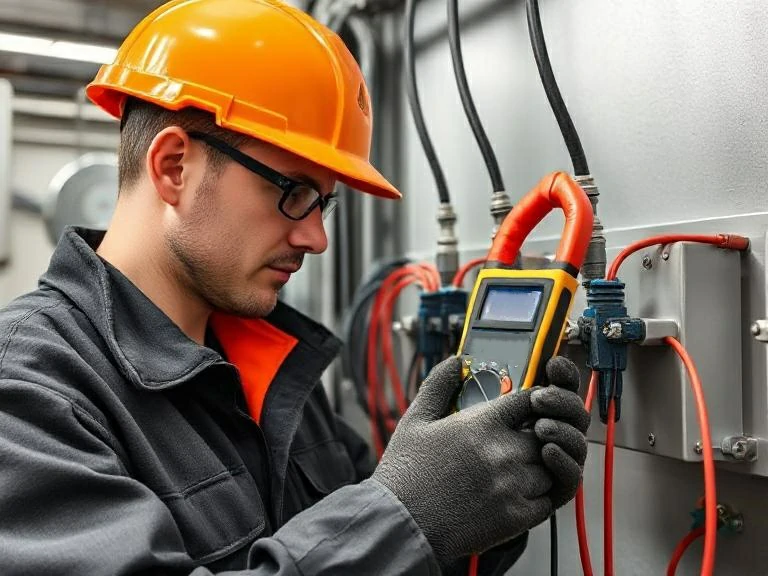
Table des matières
Dans un monde parfait, les trois phases d'un système électrique triphasé supporteraient exactement la même charge. Mais dans la réalité ? Ce n'est pas le cas. Une charge électrique déséquilibrée se produit lorsque la demande d'électricité n'est pas répartie uniformément entre toutes les phases. Cela peut paraître anodin, mais cela peut avoir des conséquences désastreuses sur votre système électrique, en particulier lorsqu'il s'agit d'équipements sensibles tels qu'un onduleur solaire.
Lorsqu'une phase travaille plus que les autres, cela entraîne des fluctuations de tension, des températures de fonctionnement plus élevées et une efficacité réduite. Si l'on n'y prend garde, ce déséquilibre de charge peut réduire la durée de vie des équipements, voire déclencher des disjoncteurs. Oui, c'est un problème plus grave qu'il n'y paraît.
Causes de déséquilibre des charges dans les systèmes électriques
On parle généralement de charge électrique déséquilibrée lorsque la puissance n'est pas répartie de manière égale entre les phases du système. Ce n'est pas un petit problème, c'est un gros problème qui peut vous surprendre et rendre vos installations électriques moins efficaces, votre équipement moins utile et peut-être même présenter un risque pour la sécurité.
Pourquoi cette charge électrique déséquilibrée pose-t-elle problème ? Voici les raisons les plus courantes :
Répartition inégale des charges monophasées
Le déséquilibre de charge se produit souvent parce que les équipements monophasés sont répartis de manière inégale dans un système triphasé. Imaginez un bâtiment où la phase A est connectée à beaucoup plus de charges d'éclairage ou de prises que les phases B et C. Le déséquilibre se produirait naturellement. C'est comme si trois serveurs dans un restaurant se répartissaient la charge de travail de manière inégale, l'un d'entre eux devant jongler pour servir 70% des tables, et tôt ou tard la qualité du service s'en ressent, pour la même raison.
Câblage ou connexions défectueux
Si le câblage est lâche ou corrodé, en particulier au niveau du tableau de distribution ou du disjoncteur, le flux de courant entre les phases peut devenir inégal. Avec le temps, cela ne déséquilibre pas seulement la charge électrique, mais peut également causer une série de problèmes, tels que la surchauffe, la chute de tension, voire le moteur, l'onduleur et d'autres équipements sensibles.
Consommation électrique asymétrique
Les gros équipements, tels que les systèmes de chauffage, de ventilation et de climatisation, les ascenseurs ou les pompes à eau, peuvent également perturber l'équilibre s'ils ne sont pas connectés de manière réfléchie. Lorsque ces machines s'allument et s'éteignent de manière irrégulière, elles peuvent tirer plus de puissance d'une phase que d'une autre, créant ainsi des conditions électriques transitoires de déséquilibre de charge qui, si elles sont suffisamment fréquentes, deviennent chroniques.
Équipements défectueux ou vieillissants
De vieux transformateurs, des appareillages de commutation mal entretenus ou des disjoncteurs endommagés peuvent introduire des incohérences dans la manière dont l'énergie est distribuée et utilisée. Une infrastructure vieillissante entraîne souvent des inefficacités et des asymétries de charge qui, avec le temps, font tranquillement boule de neige et entraînent un déséquilibre important de la charge.

Onduleur solaire et intégration des énergies renouvelables
C'est là que les choses deviennent encore plus intéressantes. Avec l'essor des énergies propres, en particulier l'énergie solaire sur les toits, de plus en plus d'établissements intègrent des onduleurs solaires dans leurs systèmes. Cependant, une mauvaise installation ou un mauvais dimensionnement de ces onduleurs peut entraîner une alimentation disproportionnée d'une phase, en particulier dans les installations reliées au réseau. Bien que l'énergie solaire change la donne en matière de développement durable, elle peut involontairement provoquer ou aggraver un déséquilibre de la charge électrique si elle n'est pas surveillée et configurée correctement.
Harmoniques et charges non linéaires
Aujourd'hui, nous utilisons des équipements électroniques, tels que des ordinateurs, des onduleurs (c'est-à-dire le VFD), ainsi que des lampes LED et ainsi de suite, qui fonctionnent lorsque le courant généré n'est pas un courant sinusoïdal régulier. Ces types de charges non linéaires, comme un vilain garçon, les harmoniques seront secrètement mélangés dans le système d'alimentation électrique. En conséquence, certaines lignes de phase sur la charge que les autres lignes de phase beaucoup plus grande, en regardant les gens laissent une personne se sentir désolé pour ces silencieusement plus de ligne de travail. Avec le temps, ces interférences invisibles et intangibles ont commencé à agir, la tension et le courant se sont lentement déséquilibrés, tout comme l'électricité domestique inégale, certains appareils sont assez fatigués, d'autres sont inactifs.
Changements opérationnels dans l'installation
Parfois, la cause est simplement une dérive opérationnelle. Une installation peut commencer avec une configuration de charge bien équilibrée, mais au fil des ans, avec le déplacement des services, l'ajout de machines ou le changement des schémas d'utilisation, cet équilibre minutieux est perdu. Les audits réguliers sont souvent négligés, et le système dérive vers un état de déséquilibre de charge électrique sans que personne ne s'en aperçoive, jusqu'à ce que quelque chose se déclenche ou tombe en panne.
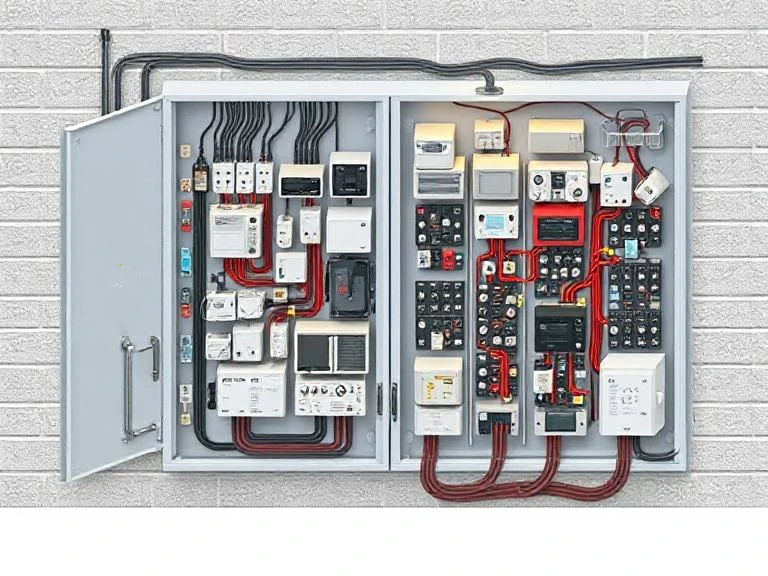
Symptômes d'un tableau électrique déséquilibré
La détection précoce d'une charge électrique déséquilibrée peut vous éviter des réparations coûteuses et des temps d'arrêt. Mais comment savoir si votre tableau électrique souffre d'un déséquilibre ? Reconnaître les symptômes d'un tableau électrique déséquilibré est essentiel pour diagnostiquer et résoudre le problème avant qu'il ne s'aggrave.
Lumières vacillantes ou atténuées
L'un des signes les plus courants d'une charge déséquilibrée est le scintillement ou l'affaiblissement des lumières dans certaines parties de votre installation ou de votre maison. Cela est dû au fait qu'une phase peut être surchargée, ce qui entraîne des chutes de tension. Si vous remarquez que certaines lumières ou zones clignotent plus que d'autres, il s'agit d'un signal d'alarme classique.
Déclenchement fréquent des disjoncteurs
Les déséquilibres dans les tableaux de distribution peuvent souvent causer des problèmes et entraîner le déclenchement inexplicable des disjoncteurs. Imaginez que l'on surcharge une phase avec plus de courant qu'elle ne devrait pouvoir supporter, ce qui peut entraîner un problème de surcharge. Des disjoncteurs qui se déclenchent en permanence sont un véritable casse-tête, et c'est un signe que le système n'est pas très stable, et qu'il faut donc le surveiller.
Surchauffe des composants électriques
La chaleur est l'ennemie des équipements électriques. En cas de problème électrique lié à un déséquilibre de charge, certaines parties de votre tableau - barres omnibus, disjoncteurs ou câblage - peuvent devenir anormalement chaudes, voire brûlantes au toucher. Avec le temps, cette surchauffe peut endommager les composants et réduire leur durée de vie.
Bruits étranges provenant de moteurs ou d'équipements
Si vous entendez des ronflements, des bourdonnements ou d'autres bruits bizarres provenant de moteurs, de compresseurs ou d'onduleurs solaires, cela peut être dû à un déséquilibre de tension ou de courant. Ces bruits indiquent souvent que l'équipement s'efforce de fonctionner dans des conditions électriques inégales.
Réduction de l'efficacité et de la durée de vie de l'équipement
Enfin, les charges électriques déséquilibrées n'affectent pas seulement le panneau, mais aussi tous les équipements connectés. Les moteurs peuvent chauffer davantage, les pompes peuvent s'user plus rapidement et les performances des onduleurs solaires peuvent se dégrader, tout cela en raison de la tension causée par une distribution inégale de l'énergie.
En connaissant ces symptômes, vous pouvez agir rapidement et vous assurer que votre système électrique reste sûr et efficace.
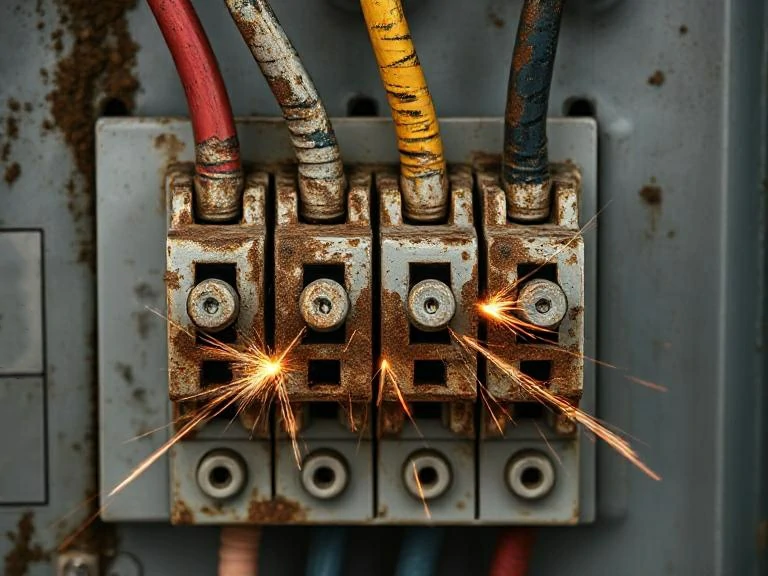
Impact d'une charge électrique déséquilibrée sur les onduleurs solaires
Lorsqu'il s'agit de maintenir un système d'énergie solaire sain, un facteur souvent négligé est la façon dont une charge électrique déséquilibrée peut affecter négativement votre onduleur solaire. Alors que la plupart des gens se concentrent sur la capacité de l'onduleur ou la puissance des panneaux, ignorer le déséquilibre de la charge peut entraîner de graves pertes d'efficacité, voire des dommages à long terme.
Dans un système parfaitement équilibré, l'onduleur distribue la puissance de manière égale sur toutes les phases. Toutefois, lorsqu'une phase consomme systématiquement plus de courant que les autres, l'onduleur solaire doit faire des heures supplémentaires pour compenser. Cela peut entraîner une surchauffe, un manque d'efficacité et, en fin de compte, une usure prématurée.
Une charge déséquilibrée peut également fausser les niveaux de tension sur une ou plusieurs phases, ce à quoi les onduleurs solaires sont particulièrement sensibles. L'instabilité de la tension contraint souvent l'onduleur à des arrêts de protection ou à un mode de déclassement, ce qui réduit la quantité d'énergie que vous récoltez réellement du soleil. Au fil du temps, cela se traduit par une réduction du retour sur investissement de l'ensemble de votre installation solaire.
En outre, les onduleurs modernes s'appuient sur des données précises en temps réel pour effectuer des ajustements dynamiques. Si le système est soumis à des conditions électriques de déséquilibre de charge, ces données ne sont plus fiables, ce qui entraîne des performances erratiques et une production incohérente.
Dans le pire des cas, un déséquilibre important peut même entraîner une panne de l'onduleur, en particulier dans les systèmes hors réseau ou hybrides où la stabilité du flux d'énergie est essentielle. Ce qu'il faut retenir ? Surveiller et corriger les charges électriques déséquilibrées n'est pas seulement une bonne pratique : c'est essentiel pour protéger votre onduleur solaire et garantir le fonctionnement optimal de votre système solaire. Pour réduire ce risque, il est essentiel de choisir un onduleur de haute qualité, conçu pour ses performances et sa fiabilité. L'onduleur fabrication d'onduleurs solaires met l'accent sur une ingénierie précise qui aide à maintenir l'équilibre du système et à le protéger contre les charges irrégulières.
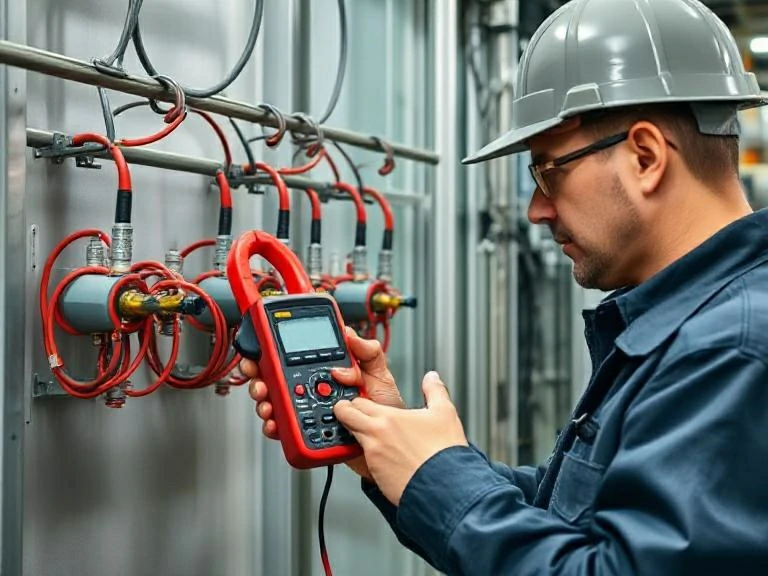
Comment vérifier si la charge est déséquilibrée
La détection d'une charge électrique déséquilibrée n'est pas réservée aux ingénieurs. Les propriétaires, les installateurs solaires et les électriciens doivent savoir repérer les signes et mesurer le déséquilibre avant qu'il n'entraîne des problèmes plus graves. Si votre système électrique semble "éteint" ou si vous remarquez des symptômes tels que des lumières vacillantes ou une surchauffe de l'équipement, il est temps d'enquêter.
Utiliser une pince de mesure ou un multimètre
L'une des façons les plus simples de commencer est de mesurer le courant absorbé par chaque phase à l'aide d'une pince de mesure. Dans un système équilibré, chaque phase doit transporter approximativement le même courant. Si l'une des phases affiche un courant plus élevé ou plus faible que les autres, il s'agit probablement d'une charge déséquilibrée.
Mesure de la tension ligne-neutre
À l'aide d'un multimètre, vous pouvez vérifier la tension entre chaque phase et le neutre. Une variation de plus de 1-2% entre les phases est un indicateur clair de problèmes électriques liés au déséquilibre de la charge. Si les niveaux de tension diffèrent trop, les appareils sensibles - comme votre onduleur solaire - peuvent se comporter de manière erratique.
Examen de la répartition de la charge dans le panneau
Ouvrez votre tableau électrique (en toute sécurité ou avec l'aide d'un professionnel) et vérifiez quels circuits sont reliés à quelles phases. Si les appareils lourds sont tous connectés d'un seul côté, cela crée un déséquilibre. Une meilleure répartition des charges peut contribuer à rétablir l'équilibre électrique entre les phases.
Utiliser des outils de contrôle avancés
Pour les installations commerciales ou les systèmes avec intégration solaire, les analyseurs numériques de la qualité de l'énergie ou les compteurs d'énergie intelligents peuvent fournir des données en temps réel sur les conditions de charge. Ces outils donnent un aperçu des tendances et aident à détecter les charges électriques déséquilibrées avant qu'elles ne provoquent des défaillances opérationnelles.
Une surveillance régulière est essentielle, en particulier pour les systèmes utilisant un onduleur solaire, car la détection précoce d'un déséquilibre peut vous éviter l'usure de l'équipement, des factures d'électricité plus élevées ou des arrêts inattendus.
Comment réparer une charge électrique déséquilibrée
Une fois que vous avez identifié une charge électrique déséquilibrée, l'étape suivante consiste à s'attaquer au problème de front. L'ignorer peut avoir de graves conséquences, allant du déclenchement de disjoncteurs à la grillade d'équipements, en particulier dans les systèmes comportant des composants sensibles tels qu'un onduleur solaire. Heureusement, il existe des moyens pratiques de rétablir la stabilité.
Vérifier et réaffecter les charges des circuits
La solution la plus directe se trouve au niveau du tableau électrique. Examinez attentivement la façon dont vos circuits sont répartis entre les différentes phases. Si vous remarquez que des appareils à forte demande - comme les systèmes de chauffage, de ventilation et de climatisation ou les gros équipements de cuisine - sont regroupés sur une seule phase, redistribuez-les. Répartissez les charges de manière à ce que chaque phase partage la charge de manière égale. Cette étape élémentaire de rééquilibrage peut réduire de manière significative les problèmes électriques liés aux déséquilibres de charge.
Installation d'un équipement d'équilibrage de la charge
Dans les systèmes plus complexes, en particulier dans les installations commerciales ou alimentées par l'énergie solaire, les dispositifs d'équilibrage automatique de la charge peuvent s'avérer salvateurs. Ces outils surveillent les charges en temps réel et ajustent automatiquement la distribution pour maintenir un équilibre électrique constant. Ils sont particulièrement utiles dans les environnements dynamiques où la demande d'électricité fluctue fréquemment.
Améliorer le câblage ou les disjoncteurs sous-dimensionnés
Parfois, le déséquilibre n'est pas seulement lié à la répartition de la charge - il peut être dû à un câblage obsolète ou à des disjoncteurs sous-dimensionnés. Ces composants peuvent limiter le courant sur une phase, ce qui déséquilibre l'ensemble du système. L'amélioration de ces éléments garantit une circulation plus fluide du courant et permet d'éliminer les symptômes de déséquilibre de charge à la racine.
Ajouter ou redistribuer la sortie du convertisseur solaire
Pour les systèmes utilisant un onduleur solaire, un déséquilibre peut se produire si la puissance générée est répartie de manière disproportionnée entre les trois phases. Travaillez avec un technicien certifié pour vous assurer que la puissance de votre onduleur solaire est répartie de manière égale. Certains onduleurs modernes sont dotés de fonctions d'équilibrage intégrées - assurez-vous de les configurer correctement.
Entretien et suivi réguliers
Le fait de régler un problème une fois ne signifie pas qu'il ne reviendra pas. Utilisez des outils tels que des compteurs intelligents ou des analyseurs de phase pour surveiller votre système électrique. Des contrôles de routine permettront de détecter tout nouveau problème de déséquilibre de la charge électrique avant qu'il ne s'aggrave.
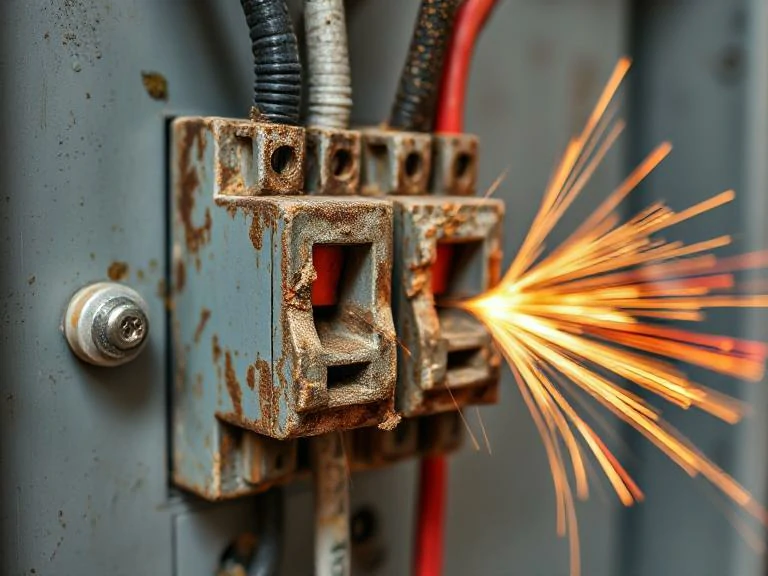
Prévenir les déséquilibres de charge : Bonnes pratiques
Lorsqu'il s'agit de maintenir un système électrique sûr et efficace, la prévention est toujours préférable à la réparation. Un système bien équilibré permet non seulement d'éviter les problèmes courants tels que les lumières vacillantes, les déclenchements de disjoncteurs ou la surchauffe du câblage, mais aussi de prolonger la durée de vie de votre équipement, en particulier si vous utilisez un onduleur solaire dans le cadre de votre installation.
Que faut-il donc faire pour éviter qu'un scénario de déséquilibre de charge électrique ne se produise ? Cela commence par une prise de conscience et une planification intelligente.
Répartir uniformément les charges dès le départ
Que vous conceviez un panneau résidentiel ou que vous configuriez un site commercial alimenté par l'énergie solaire, il est essentiel d'équilibrer correctement les phases. Assurez-vous que les appareils à forte consommation, tels que les climatiseurs, les chauffe-eau et les fours, sont répartis uniformément sur les trois phases, et non sur une seule. Cette disposition proactive minimise le risque de créer une charge déséquilibrée en aval.
Utiliser des outils d'analyse de phase
La technologie est votre amie dans ce domaine. Les analyseurs de charge et les systèmes de surveillance numérique vous permettent de voir exactement comment se comportent vos circuits en temps réel. Ces outils vous permettent de procéder à des ajustements en connaissance de cause avant que la situation ne devienne incontrôlable. Ils sont particulièrement utiles dans les grandes installations comprenant un onduleur solaire, où même de petites fluctuations peuvent déclencher des pannes ou des inefficacités.
Maintenir un calendrier pour les contrôles réguliers de la charge
Même le système le mieux conçu peut se déséquilibrer au fil du temps - des appareils sont ajoutés, les habitudes d'utilisation changent et l'usure peut affecter le flux de courant. Prenez l'habitude de mesurer et d'ajuster. Une installation équilibrée aujourd'hui ne garantit pas qu'elle le restera.
Former ou consulter des électriciens agréés
Il est toujours judicieux de faire appel à un professionnel. Un électricien expérimenté peut repérer les premiers signes d'un déséquilibre de la charge électrique et vous aider à mettre en œuvre des solutions permanentes. En particulier dans les systèmes intégrant des énergies renouvelables, il veillera à ce que votre stratégie d'équilibre électrique tienne également compte de la dynamique solaire.
L'action préventive ne permet pas seulement d'économiser de l'énergie, mais aussi de l'argent, du temps et parfois même du matériel.
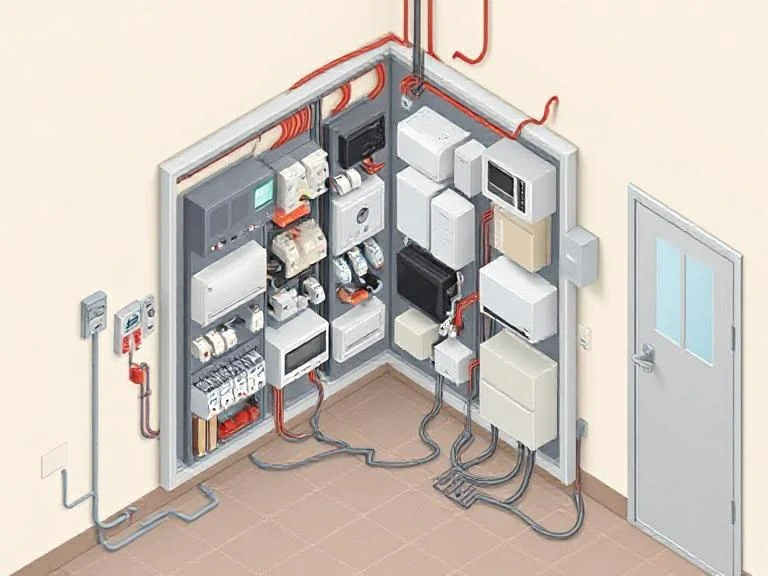
Conclusion
Vivre avec une charge électrique déséquilibrée, c'est comme conduire une voiture avec un pneu crevé - elle se déplace toujours, mais pas très loin, et pas longtemps. Qu'il s'agisse d'un câblage résidentiel ou d'une installation commerciale équipée d'un onduleur solaire, le maintien de l'équilibre des systèmes électriques n'est pas seulement une bonne pratique, c'est une nécessité pour la sécurité, l'efficacité et la réduction des coûts.
En reconnaissant les symptômes d'un tableau électrique déséquilibré, en identifiant les causes profondes et en appliquant les bonnes solutions, vous pouvez rétablir l'harmonie de votre système. N'ignorez pas les signes. Parce qu'en électricité, comme dans la vie, l'équilibre change tout.
FAQ
Que se passe-t-il si la charge électrique est déséquilibrée ?
Une charge électrique déséquilibrée peut être à l'origine de nombreux maux de tête. Par exemple, les équipements peuvent chauffer parce qu'ils sont surchargés, et votre facture d'électricité peut grimper en flèche. Pire encore, les composants électriques peuvent se mettre en grève prématurément et les disjoncteurs de votre maison peuvent se déclencher de temps à autre. Dans un système triphasé en particulier, les charges déséquilibrées peuvent tuer les moteurs et rendre les onduleurs solaires moins efficaces.
Quelle est la cause d'une charge déséquilibrée au niveau du tableau électrique ?
Les raisons les plus courantes sont les suivantes : les appareils ne sont pas placés de manière uniforme, un disjoncteur défectueux, le câblage est un peu vieux, ou il y a tellement d'appareils à haute puissance connectés quelque part que la charge sur cette phase est trop importante. Ainsi, au fil du temps, le courant de charge est déséquilibré, ce qui alourdit considérablement l'ensemble du système.
Comment réparer une charge électrique déséquilibrée ?
Pour résoudre le problème, il faut généralement commencer par identifier les circuits surchargés ou sous-chargés, puis les redistribuer uniformément sur toutes les phases disponibles. Dans les installations solaires, vous devrez également vous assurer que la sortie de l'onduleur solaire est équilibrée par rapport à la charge qu'il alimente.
Comment éviter une charge déséquilibrée ?
Une bonne planification permet d'aller loin. Il faut toujours équilibrer les charges électriques entre les phases lors de l'installation du panneau et inspecter régulièrement le système. Les outils de contrôle de la charge peuvent vous alerter lorsque les choses commencent à se déséquilibrer.
Une charge déséquilibrée peut-elle déclencher un disjoncteur ?
Bien sûr que oui. Le déséquilibre de la charge entraîne généralement un courant plus élevé que celui pour lequel le disjoncteur est conçu, ce qui peut entraîner un déclenchement ou même une surchauffe.
Comment vérifier une charge déséquilibrée ?
Utilisez une pince de mesure ou un analyseur de phase pour mesurer le courant sur chaque phase. Si les relevés diffèrent de manière significative (généralement plus de 10%), vous êtes en présence d'une charge déséquilibrée.
Quel est l'exemple d'une charge déséquilibrée ?
Un exemple classique : un panneau triphasé dont une phase alimente plusieurs climatiseurs tandis que les deux autres ne font qu'alimenter des circuits d'éclairage. Cette phase finit par être surchargée, ce qui crée un problème électrique de déséquilibre de charge.
Quel est le déséquilibre de courant acceptable ?
En général, les déséquilibres de courant inférieurs à 5% sont acceptables. Les déséquilibres de courant supérieurs à 10% doivent être corrigés immédiatement pour éviter d'endommager le moteur et les composants du convertisseur solaire.
Comment corriger un déséquilibre de tension ?
Il y a plusieurs façons de résoudre le problème, par exemple en essayant de redistribuer la charge, en ajustant la batterie de condensateurs ou en s'assurant que l'impédance est la même sur les trois phases. L'utilisation d'un équilibreur de phase automatique ou l'amélioration des composants les plus anciens peuvent également aider.
Une charge déséquilibrée peut-elle affecter les onduleurs solaires ?
Oui. Un onduleur solaire est comme un petit compagnon stable, il n'aime rien de mieux que de travailler dans un environnement stable. Mais si vous le connectez accidentellement à une charge électrique déséquilibrée, il peut avoir quelques problèmes. Il peut se mettre en grève, devenir inefficace ou, pire encore, activer un mode de protection et se cacher pour récupérer, ce qui est particulièrement susceptible de se produire dans les systèmes hors réseau ou hybrides.




